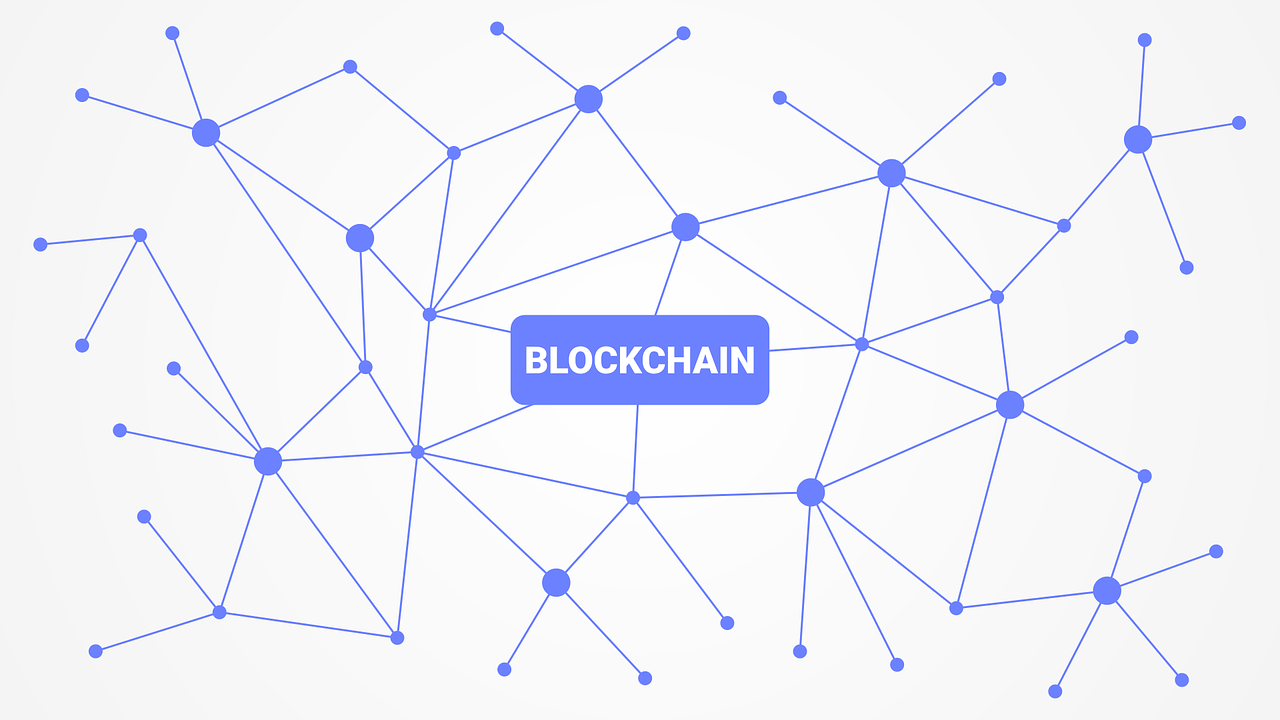Blockchain technology is transforming the way we conduct transactions, manage data, and even interact with digital currencies. From cryptocurrencies like Bitcoin and Ethereum to applications in supply chain management and finance, blockchain is paving the way for the future of digital innovation. But what exactly is blockchain, and how does it work?
In this article, we’ll dive deep into blockchain technology, its fundamental structure, how it differs from traditional databases, and its various applications in industries worldwide. Whether you’re a tech enthusiast or simply curious about cryptocurrency, this beginner’s guide will provide you with all the insights you need to understand blockchain’s potential.
Blockchain Technology: An Overview
Blockchain is essentially a decentralized and distributed ledger that records transactions in a secure, transparent, and immutable way. Unlike traditional systems that rely on a central authority or intermediary, blockchain technology uses a peer-to-peer network of nodes to validate and record every transaction. This distributed ledger technology (DLT) ensures that once a transaction is logged, it cannot be altered or tampered with.
The primary purpose of blockchain is to offer a trustworthy method for recording and verifying financial transactions, digital assets, and other forms of data. The blockchain network operates independently of any central authority, which makes it resistant to censorship and fraud.
How Blockchain Works
Each block in a blockchain contains a list of transactions, a timestamp, and a reference to the previous block, creating an unbroken chain of data. This is where the term “blockchain” comes from: a chain of blocks linked together in a chronological order. When a block is complete and verified by the network’s nodes, it is sealed and linked to the previous block in the chain. This continuous process creates an immutable record of all transactions.
 Blockchain Transaction Process
Blockchain Transaction Process
- Initiating Transaction: A user starts a transaction, which is broadcast to the peer network.
- Verification: Nodes on the network validate the transaction using cryptographic techniques and advanced mathematical equations.
- Adding to Block: Once validated, the transaction is added to a new block.
- Hashing: A cryptographic hash is applied to the block, linking it to the previous block.
- Consensus: The block is added to the blockchain after consensus is reached across the network, and the transaction becomes part of the immutable ledger.
This process ensures the security and integrity of the transaction records, which cannot be altered once added to the blockchain.
Advertisement
The Fundamental Structure of Blockchain
A blockchain is made up of several components that work together to ensure secure and transparent data storage. Let’s take a closer look at these components:
1. Blocks: The Building Blocks of Blockchain
Each block in a blockchain contains transactional data, such as transaction time, amounts, and the addresses involved. Every block is uniquely identified by a hash (a cryptographic fingerprint). Once the block reaches its maximum capacity of transactions, it is sealed and linked to the previous block in the chain. This continuous process creates an immutable record of all transactions.
2. Hashing: Ensuring Integrity and Security
Hashing is a process that converts transaction data into a fixed-length code, often using the SHA-256 algorithm. This code, or hash, ensures that the data is tamper-proof. If a block’s data is altered, its hash changes, and subsequent blocks would also become invalid, making it nearly impossible to alter any record without detection.
3. Consensus Mechanism: Reaching Agreement Across Nodes
In a decentralized blockchain, there is no central authority to validate transactions. Instead, a consensus mechanism is used to ensure that all participants in the network agree on the validity of a transaction. Popular consensus algorithms include Proof of Work (PoW) and Proof of Stake (PoS).
Blockchain vs. Traditional Databases
Blockchain differs significantly from traditional databases in several ways. The key differences between the two include:
| Aspect | Blockchain | Traditional Databases |
|---|---|---|
| Control | Decentralized, controlled by multiple nodes | Centralized, controlled by one entity |
| Data Structure | Data stored in blocks linked in a chain | Data stored in tables or rows |
| Security | Immutable, tamper-proof | Data can be altered or deleted |
| Transparency | Public ledger visible to all participants | Limited visibility, private data |
| Access | Open to anyone (for public blockchains) | Restricted access by user roles |
Traditional databases are often managed by a single organization, whereas blockchain is decentralized, meaning no single entity controls the data.
Advantages of Blockchain Technology
Blockchain offers several advantages that make it an appealing technology for businesses, financial services, and various industries. Here are some of the key benefits:
1. Enhanced Security
Since blockchain uses cryptographic techniques like hashing and public-private keys, it is highly secure. Each transaction is encrypted, and blocks are linked in a way that makes tampering with data almost impossible.
2. Transparency and Trust
Blockchain’s transparent nature means all transactions are recorded on a public ledger, which anyone can access. This transparency builds trust among users and participants, making blockchain ideal for applications like cryptocurrency transactions and supply chain management.
3. Reduced Costs and Intermediaries
By eliminating intermediaries like banks or clearinghouses, blockchain reduces the cost and time involved in processing transactions. This is particularly useful for cross-border payments and real estate transactions, where traditional methods can be expensive and time-consuming.
4. Faster Transactions
Blockchain enables faster transactions by removing the need for intermediaries to verify and process payments. Transactions can be completed in minutes, compared to several days for traditional methods.
Disadvantages of Blockchain Technology
Despite its many advantages, blockchain technology does have some drawbacks:
- Scalability Issues: Blockchain networks can become congested with too many transactions, leading to slower speeds and higher transaction fees.
- Energy Consumption: Some blockchain systems, especially those using Proof of Work, consume a lot of energy, raising environmental concerns.
- Complexity: Implementing blockchain technology in existing systems can be complex and costly, particularly for businesses that are not familiar with decentralized systems.
- Regulatory Concerns: The use of cryptocurrencies and blockchain for illicit activities raises concerns about security, regulation, and compliance.
Types of Blockchain Networks
There are different types of blockchain networks, each with its own advantages and applications:
1. Public Blockchains
Public blockchains are decentralized, open networks that allow anyone to participate in the transaction validation process. Bitcoin and Ethereum are prime examples of public blockchains.
2. Private Blockchains
Private blockchains restrict access to a selected group of participants. These blockchains are often used by businesses that need to maintain higher levels of security and privacy.
3. Consortium Blockchains
A consortium blockchain is a hybrid between public and private blockchains. A group of organizations share control of the network, making it more efficient than public blockchains while maintaining some level of decentralization.
4. Hybrid Blockchains
Hybrid blockchains combine elements of both public and private blockchains, offering the best of both worlds. They are commonly used in industries where data privacy and transparency are both essential, such as in supply chain management.
Use Cases of Blockchain Technology
Blockchain technology is not limited to cryptocurrency. Its applications span several industries, including:
- Supply Chain Management: Blockchain improves traceability and transparency, ensuring that goods are ethically sourced and tracked throughout the supply chain.
- Healthcare: Blockchain ensures the security and privacy of medical records, allowing patients and healthcare providers to securely access and update health information.
- Finance: Decentralized finance (DeFi) applications are transforming traditional financial services, enabling users to lend, borrow, and trade assets without intermediaries.
- Voting Systems: Blockchain provides a secure and transparent method for voting, ensuring that election results are tamper-proof and verifiable.
 Future Applications of Blockchain Technology
Future Applications of Blockchain Technology
The future of blockchain technology looks promising, with growing adoption in industries like fintech, healthcare, real estate, and supply chain. The integration of blockchain with emerging technologies like artificial intelligence and the Internet of Things (IoT) will unlock new possibilities, such as improved data analytics and automation.
Moreover, hybrid blockchains are becoming more popular, providing the flexibility to balance transparency, privacy, and security, and making blockchain a versatile solution for a wide range of industries.
Blockchain is no longer just a buzzword in the cryptocurrency space. Its applications are vast, offering a decentralized, secure, and transparent solution for businesses and individuals alike. From bitcoin to supply chain management, blockchain is shaping the future of how we transact, store, and manage data across the globe. As the technology continues to evolve, we can expect to see even more innovative uses for blockchain that will disrupt traditional systems and bring about more efficient and secure processes across industries.
